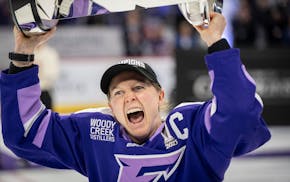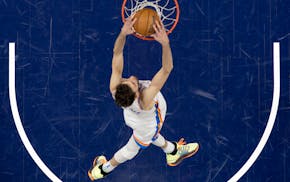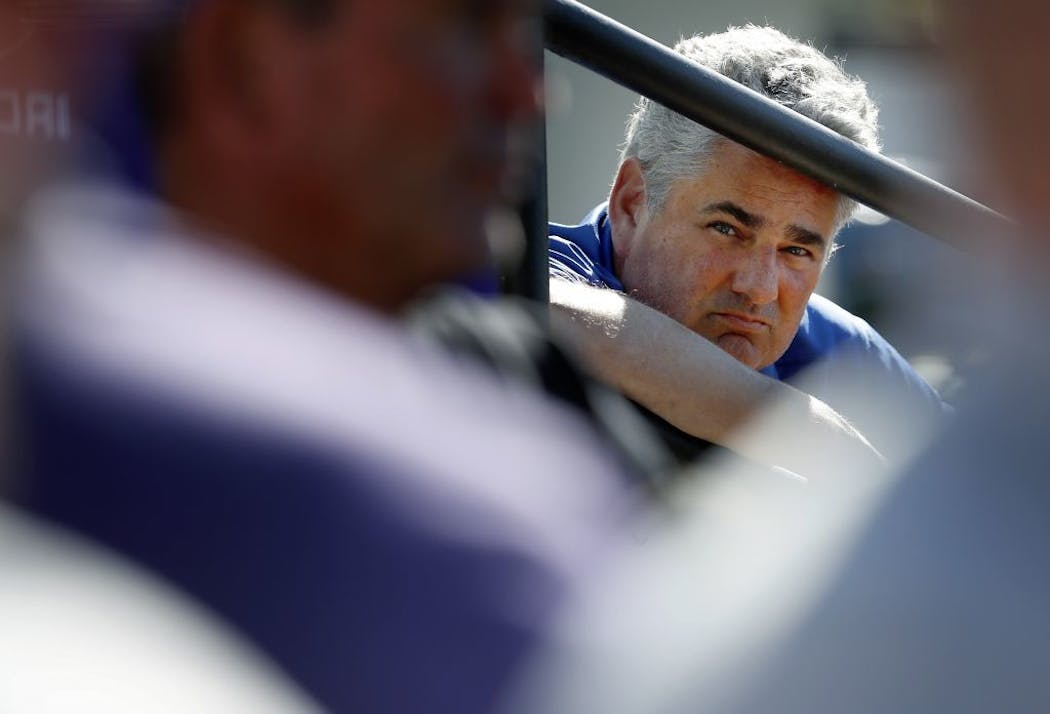Four years ago Callum Williams was calling an English Premier League game between Tottenham Hotspur and Crystal Palace. Remotely, off a monitor, something he had done many, many times before, including for World Cup qualifying matches.
Tottenham was pushing the action. The ball made it to the edge of the penalty area, with midfielder Dele Alli about to control a pass from a teammate.
And then: Nothing.
"The feed cut out completely," said Williams, now part of the Minnesota United broadcast team. "I had to fill as well as I could. Having to make stuff up, really. When the feed finally came back — it was the longest 20 seconds of my life — the ball was in the back of the net and Alli was celebrating."
Exhibit A in what can go wrong.
Major North American professional team sports are on the verge of returning in the next several weeks. Baseball, basketball, hockey and soccer leagues have plans to play that lean heavily on television for both revenue and recapturing the fans' attention.
What we don't know, exactly, is how it's all going to look or sound like in the age of the coronavirus pandemic. At first, there won't be fans in the stands. Unless sound is piped into broadcasts — as has been done in European soccer matches recently — the arenas, rinks and courts will be quieter than we've ever heard them.
“If Dalvin Cook breaks free of tackles, will I yell, 'He's loose'? don't think about that. I just know that, in the early stages of doing a regular-season game, with minimum or no fans, it's going to be eerie.”
And we don't yet know, exactly, how broadcasters will be allowed to cover those games. In person? Off a monitor in some remote studio? Off a monitor at home?
A number of broadcast veterans made two things clear recently: One, they don't yet know what they'll be able to do, and where they'll do it from. And two, that's OK. Just getting back to sports after a monthslong hiatus is the important thing.
"I'll do a game in a bathrobe, on a couch, if they'll let me call a game," said Anthony LaPanta, the Wild's TV play-by-play voice for Fox Sports North. "I want to get back to work."
Will the average fan notice?
A lot of ideas are on the table, including broadcasting from a remote location. Leagues playing in bubbles or hubs are expected to limit the number of broadcast personnel onsite.
Baseball TV announcers are likely to stay home when their teams are on the road, according to multiple news media reports.
As FSN senior vice president and General Manager Mike Dimond said: "We're going to make the best of it."
Expect to see some new camera angles and possibly remote-controlled cameras. For the broadcasts of the "MLS is Back" tournament, which begins July 8, the league is also developing interactive elements so that fans can participate.
Fans will notice changes and differences, Dimond said, but they'll be happy to have games back on.
"There's only so much Hulu and Netflix you can watch," he said. "Fans have been clamoring for live sports. The pent-up need is there."
B.J. Schecter, a former Sports Illustrated editor who is now a professor in the sports media program at Seton Hall University, said broadcasting companies are going to learn some things about efficiency that could carry forward.
“I'll do a game in a bathrobe, on a couch, if they'll let me call a game. I want to get back to work.”
But calling games from arenas without fans or remotely is mainly a short-term issue. There is no question the broadcast will suffer to some extent.
"The question is, will the average fan notice?" Schecter said. "And will they care? I'm not so sure about that. I don't think anyone knows how it will work.
"But people are so starved for sports right now that, in the short run — six months or a year of this — I think it will be OK."
What if the arena is silent?
But the job of describing games will change. Rebecca Lobo calls WNBA games for ESPN. Much of the ebb and flow of a broadcast, she said, is dictated by what's going on in the game and how the crowd is reacting.
"So much is knowing when to talk, and when not to talk," she said. "Maybe because there is a moment in a building, something has happened for the home team, you let the crowd dictate the broadcast. Sometimes, as a broadcaster, silence can speak volumes."
But what if the arena is, relatively speaking, silent?
KFAN personality Paul Allen, the radio voice of the Vikings, also has called horse races at Canterbury Park for 25 years. This summer he's already had the experience of calling races in a setting without a lot of fans.
But if the NFL season goes ahead without fans in the stands, Allen knows it will change the sound of a Vikings game on the radio. Football is a game of stops and starts. There is a baseline din that serves as a backdrop to the broadcast, and the surge and swell of fans' voices are cues for announcers.
"If Dalvin Cook breaks free of tackles, will I yell, 'He's loose!'?" Allen said of one of his signature calls. "I don't think about that. I just know that, in the early stages of doing a regular-season game, with minimum or no fans, it's going to be eerie."
Allen's gut tells him he'll be able to call games from inside stadiums, though he's done it off monitors before, when he did play-by-play in 2000 for vikings.com. He doesn't yet know how changes in the environment will impact the way he calls a game.
"The technical aspect of the performance and delivery matters a lot to me," he said. "Describing the play accurately matters. But the things that go into a cadence, the building to a crescendo, letting the crowd amplify what's happening? Those are tricks of the trade, things I've learned over the years and tried to master to make the sound of what people are hearing as good as it can be. That splash of cold water is coming. I expect it very early in the first game I'm calling. I'll figure out how to handle it."
Hearing a different game
What might emerge, at least for some sports, is an aspect of the game fans haven't heard before. This is what intrigues Lobo about airing WNBA games without fans.
If sound isn't piped in, fans will hear players communicating on defense, coaches calling out plays and plans. The players trading trash talk. All sorts of things fan noise can drown out.
"I would assume the mics would pick all that up," she said. "It could be a good lesson for younger players. I coach some youth teams. The hardest thing to get them to understand is how important it is to talk."
Kyndra de St. Aubin works with Williams announcing Minnesota United games. She, too, has done a lot of broadcasts off monitors, including Women's World Cup games. If that is the new reality, she's ready for it.
The problem she and Williams know exists is that a broadcast is dependent on what the director of the video feed chooses to show at a given moment. Production levels and available angles are important. There is always going to be a part of the field broadcasters — off site — can't see on TV.
It's also important to provide energy on broadcasts.
"You can't sound like you're in a closet when you're calling a game," de St. Aubin said. "You have to bring the same enthusiasm as when you're there."
LaPanta noted that restricted access to players and coaches between Wild games might present its own challenges. He guessed that he might rely more on statistics or history. Then again, he won't really know until it actually happens.
"It won't be the same," he said. "But we're not the only ones."

PWHL expansion to Seattle and Vancouver could shake up Frost's championship team

RandBall: 10 things to know about Minnesota sports today

Meet the best high school freshman athletes in Minnesota
![Anthony Edwards, Julius Randle and the Wolves were always a step behind the Thunder on Monday.
] CARLOS GONZALEZ • carlos.gonzalez@startribun](https://arc.stimg.co/startribunemedia/CJVGEXG7INGRNHAEH5TAVZQ24U.jpg?h=91&w=145&fit=crop&bg=999&crop=faces)
Podcast: Patrick Reusse on why he never thought the Wolves would win Game 4



